
Sole Trader Tax: A guide
As a sole trader, it’s important to make sure you understand how to handle your taxes. This can be overwhelming, especially if you are new to freelancing.
Article contents
− +- Introduction
- What do sole traders need to know about tax?
- How to calculate income tax for sole traders
- What counts as taxable income?
- How much income tax do you pay as a sole trader?
- How to estimate your sole trader income
- Understanding the Medicare levy and surcharge
- Exemptions from the Medicare Levy
- Understanding PAYG instalments and how they help
- Understanding Goods and Services Tax (GST)
- Business Activity Statements (BAS)
- Checklist: Managing Sole Trader Taxes
- Use Rounded to make tax time simple

But don’t worry—we’re here to explain everything sole traders need to know about filing taxes and maximising your returns so you don’t end up paying too much.
Note: This article has been updated for the 2024 - 2025 financial year. For quick updates on what’s new, check out our Tax Updates for 2024 page.

What do sole traders need to know about tax?
When you are working full time for a company as an employee, taxes in Australia are relatively simple—with single touch payroll, all your income and tax data is automatically sent to the ATO, where you can review it in your MyGov account.
As a freelancer or entrepreneur it's up to you to understand exactly what you owe and how to file it appropriately. We’ll cover most of these topics in more depth, but for starters, here are the basic concepts you should understand when it comes to taxes for sole traders, with links to help you learn more:
Once you understand these basic concepts, you may find you have everything you need to calculate and pay your taxes in full, on time, year in and year out.
If your taxes are more complicated, we recommend speaking with an accountant who can provide tailored advice for your circumstances. Here’s our guide on how to find a tax accountant.
Now, let’s dive in and look at some of these topics more closely.
How to calculate income tax for sole traders
There are a few different types of taxes sole traders need to understand, but let’s cover the easy one first: income tax. Income tax is the amount of tax you pay the government based on the income you have earned.
What counts as taxable income?
In simple terms, your taxable income is the amount of money you make from the goods and services you provide in a financial year, minus your business expenses. (We’ll get into GST and expenses later in this article).
For example, if you earn $100,000 and have business expenses totalling $18,250 your taxable income will be $81,750.
How much income tax do you pay as a sole trader?
Sole traders pay the same tax rates as those who have a regular job. You can determine your tax rate by using the current tax table provided by the Australian Tax Office (ATO):

Resident tax rates 2024 - 2025
This tax table is for the tax year 2024-2025, and only applies to Australian nationals and permanent residents. Learn more about 2024-2025 tax brackets here.
Rounded’s sole trader tax calculator makes it super easy for users to know exactly how much they owe. As you update your income and expenses, the software automatically estimates your income tax, which updates automatically on your dashboard.

Let's walk through a practical scenario to illustrate how this works.
Imagine you’re a freelance graphic designer, and you earned $120,000 in the last financial year.
You also spent $15,000 on business-related expenses including software subscriptions and a new computer. Subtracting your expenses, your taxable income comes to $105,000.
Looking at the tax table, you'll see that your income falls into the "$45,001 - $135,000" bracket. Here's how your tax would be calculated:
You'll start with the base amount for this bracket: $4,288.
Then, you need to account for the portion of your income above $45,000. That's $60,000 ($105,000 - $45,000).
For every dollar in that $60,000, you'll pay 30 cents in tax. So that's an additional $18,000 (60,000 * 0.30).
Adding it all up: $4,288 + $18,000 = $22,288.
So, in this scenario, your total tax bill for the year would be $22,288. Remember, this is just the income tax - you'll need to factor in other considerations like the Medicare levy, super contributions, and PAYG instalments as well.
How to estimate your sole trader income
When you work for an employer, you’ll likely have an hourly rate or salary that makes it easy to know how much you’ll earn in a single year. As a freelancer, it’s not so simple—your income may be less steady, and you might not know in May how much you’ll be earning in July.
The tricky part for freelancers is how to calculate income when you don’t know exactly what you’ll be making. There are a few ways to tackle this problem.
Use past data. If you’ve been freelancing for a while, use your income from previous periods to determine how much you expect to make. This is one of the big benefits for Rounded users—our software creates simple, comprehensive reports that make it easy to see how much you made over any given period. These numbers can help you get an accurate idea of what you will make in the same period in the coming months.
Overestimate if you aren’t sure. If you overestimate your tax payments, you’ll end up getting money back from the government after you file. If you underestimate, you could be hit with an unexpected tax bill—the former is obviously preferable, so give yourself a little wiggle room in case you end up making more than you expected.
Here’s the good news: You don’t need to estimate your income for an entire tax year. Many freelancers and sole traders pay their taxes in quarterly instalments, which means you only need to give an accurate estimate for three months at a time. We’ll cover that more below, but before we get to that, let’s talk about business expenses.
Calculating sole trader business expenses and tax deductions
Business expenses are any products or services you pay for out of pocket to keep your business running. These can include anything from your mobile phone and internet bills to office supplies to rent on your home-office space.
We have a number of articles that can help you figure out what can and can’t be deducted as an expense:
There are a few important things to remember when it comes to calculating your business expenses.
Not every bill is 100% tax-deductible. Let’s say you use your mobile phone both for work and personal calls. You would need to determine how you divide your time—for example, you might use your phone for business purposes 60% of the time. In this case, only 60% of your phone bill would be tax-deductible.
You need to hold on to receipts and invoices for anything that you plan to claim as a business expense, as the ATO may ask for this evidence when you file taxes. The ATO does say that electronic copies of your receipts are fine, so feel free to take screenshots or photos of your recipes and upload them to Rounded or another secure place.
When it comes to tracking your business expenses, Rounded is once again here to help. By connecting your bank accounts to Rounded, you can easily mark which payments are tax-deductible, and even set a percent-amount per item. Then Rounded will calculate all of your deductions and subtract those from your income, giving you the taxable income amount you need to put on your tax forms.
Remember, it’s always smart to check in with a tax accountant when reviewing your business expenses and preparing your taxes.
Superannuation tax deductions for sole traders
Sole traders and partnerships aren’t required to pay super to themselves, but it’s a good idea to do so. Not only will this help you save for retirement, but it can also reduce your tax burden.
When filed properly, you can claim a tax deduction for personal super contributions until you are 75 years old, up to a certain amount. (Here’s how to keep track of Superannuation deductions with Rounded.)
Check out our full guide to superannuation for sole traders for more guidance.
Understanding the Medicare levy and surcharge
The Medicare levy is a tax most Australian taxpayers pay, to provide funding for our public health system. In most cases, it’s an additional 2% of your taxable income, beyond the income tax you pay.

The ATO has a medicare tax levy calculator here as well.
What is the Medicare Levy Surcharge (MLS)?
In addition to the medicare levy, high-earners in Australia are required to pay an additional fee if they don’t have the requisite private hospital insurance.
Related: Sole trader insurance: An overview
The MLS rates for 2024-2025 are:
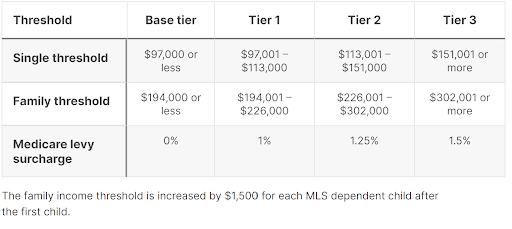
Exemptions from the Medicare Levy
There are situations where you might be exempt from paying the Medicare levy or eligible for a reduced rate. These include:
Low-income earners
Foreign residents
People not entitled to Medicare benefits
Those with specific medical conditions
If you think you might be eligible for an exemption, it's worth checking the ATO website or consulting with a tax professional. In some cases, you may be required to file a waiver in order to claim your exemption.
Understanding PAYG instalments and how they help
Figuring out how much you will earn in a full year could be quite the headache. Fortunately, Australia has a system in place called Pay As You Go (PAYG), which allows you to make payments in advance towards your expected tax bill for that financial year.
Related: How to prepare your freelance business for PAYG
Paying your tax bill in regular instalments (usually quarterly) ensures you don’t fall behind and aren’t hit with an eye-watering bill at the end of the financial year.
When it comes to paying your PAYG instalments, you have two options:
A predetermined instalment amount. This flat figure is set by the ATO based on your previous year’s tax return. If you expect to make approximately the same amount this year as you did last year, this is a good option.
A predetermined instalment rate, as a percentage rate. The ATO will determine a percentage rate based on your most recent tax return lodgement. As this is based on a prior year tax lodgement, this may not necessarily correlate with your current year earnings. If this is the case, then you can adjust your instalments, by multiplying your actual income earned in the quarter by the ATO instalment percentage rate.
This is a better option if you expect your taxable income to fluctuate, or if your income is going to be significantly different than last year.
You can manage all of your PAYG instalments through the MyGov website.
They’ll send you some reminders when it’s time to pay up, but it’s a good idea to know the expected payment periods and mark them on your calendar. For 2024 - 2025, those PAYG due dates are:
July 28 | Q4 (income earned April - June)
October 21 | Annual PAYG instalment date (filing due October 31)
February 28 | Q2 (income earned October - December)
April 28 | Q3 (income earned January - March)
If you’re working with a registered tax agent, it’s likely they can get an extended deadline for your annual tax return. The amount of time they can give beyond that deadline varies, so it’s best to discuss this with them before the October 31 deadline.
Understanding Goods and Services Tax (GST)
Aside from income tax, the other tax that can apply to sole traders is GST. In Australia, businesses are required to collect a 10% tax on most goods and services sold in Australia to Australian companies or individuals.
Not all sole traders need to register for and pay GST, but in general if you earn over $75,000 per financial year or drive taxis, it’s mandatory. That’s why it’s important to charge this amount on your invoices, something Rounded can help you do automatically through its smart invoicing platform.
For more information about GST, check out our article that explains who needs to register for GST and how to do just that if you meet the requirements.
Business Activity Statements (BAS)
If you’re required to pay GST, you’ll need to complete and lodge a BAS with the ATO every quarter. A BAS is a single form that shows:
Your quarterly income
How much GST you owe (or if you’ve paid out more GST than you earned from clients, how much of a refund you are due)
Your PAYG instalments
Any additional wages from other forms of employment
In July 2017 the ATO introduced the simpler BAS format, which requires you to report less information and takes less time to complete.
Related: The freelancers guide to Business Activity Statement (BAS)
Rounded will automatically generate a BAS report for you, pulling together all of the numbers needed to complete the form.

Note: When calculating your annual income tax do not include GST in your taxable income. You pay GST as a separate component when submitting your BAS.
Checklist: Managing Sole Trader Taxes
We’ve now covered the most essential information about sole trader taxes. Check out our full sole trader tax return checklist here, or use this quick list:
Calculate your income tax based on previous years or your projected income
Keep track of all business expenses, and save copies of every relevant receipt
Be aware of when PAYG instalments are due and make quarterly payments on time
Be sure to file your BAS quarterly as well
If you are required to collect GST, take time to format invoices correctly and charge clients for these payments
Use Rounded to make tax time simple
We know there’s a lot to remember when it comes to paying taxes as a sole trader—that’s why so many freelancers in Australia and New Zealand use Rounded.
With our software, you can easily:
Track your quarterly and annual income
Automatically apply GST to invoices
Easily record and calculate business expenses
Generate BAS figures with a few quick clicks
Store all your receipts in one place
Cover Photo by Scott Graham on Unsplash
Contents
- Introduction
- What do sole traders need to know about tax?
- How to calculate income tax for sole traders
- What counts as taxable income?
- How much income tax do you pay as a sole trader?
- How to estimate your sole trader income
- Understanding the Medicare levy and surcharge
- Exemptions from the Medicare Levy
- Understanding PAYG instalments and how they help
- Understanding Goods and Services Tax (GST)
- Business Activity Statements (BAS)
- Checklist: Managing Sole Trader Taxes
- Use Rounded to make tax time simple
Join newsletter
ABOUT ROUNDED
Invoicing and accounting software for sole traders. Get paid faster and relax at tax time.
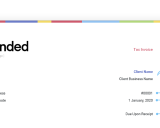


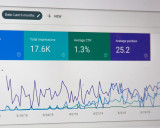









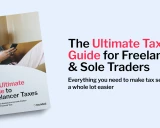

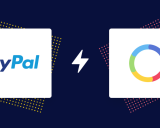










-p-1600.jpeg)
